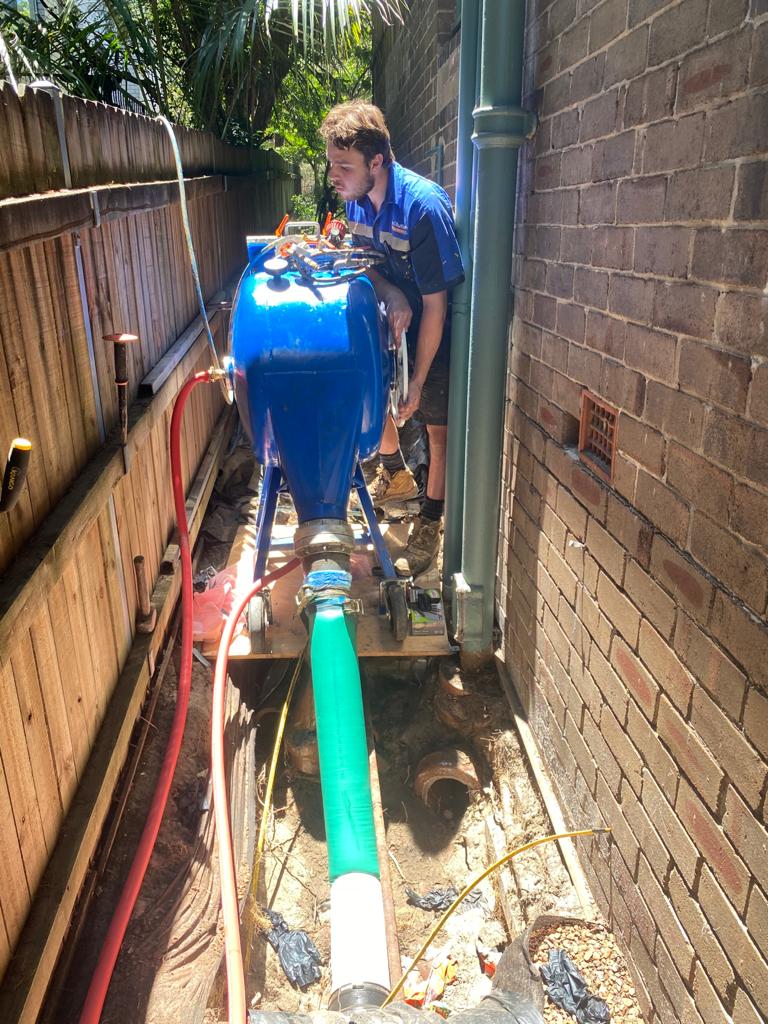
13 May The Ultimate Guide to Trenchless Pipe Relining in Inner West: Benefits and Process
Got a home in Inner West? If your place is over 30 years old, chances are, so are your pipes. And old pipes? They’re trouble. Leaks, blockages, and even sneaky tree roots can turn your plumbing into a nightmare. The old fix was to dig up your yard, making a huge mess and putting a damper on your day.
Here’s a bright idea: trenchless pipe relining. It’s like giving your pipes a new life from the inside out! This slick method uses a special goo that transforms into a solid, tough new pipe right where the old one was. No trenches, no mess. This guide’s going to walk you through all the great stuff about trenchless relining and how it’s done, making it as clear as a sparkling clean and fully functional pipe.
Understanding Trenchless Pipe Relining in Inner West
Trenchless pipe relining is a modern plumbing solution gaining momentum in Inner West due to its efficiency and minimal disruption compared to traditional pipe repair methods. This guide delves into the benefits and detailed processes of trenchless pipe relining, offering homeowners and property managers in Inner West essential insights into why this method is increasingly preferred for repairing damaged sewer lines and pipes.
- What is Trenchless Pipe Relining?
Trenchless pipe relining is a method used to repair damaged and ageing pipes by creating a “pipe within a pipe.” This technique involves inserting a resin-saturated lining into the existing pipe, which then hardens to form a new, durable pipe layer. This process eliminates the need for extensive excavation, making it a less invasive option compared to traditional pipe repair methods.
The key components involved in trenchless pipe relining include the liner and the resin. The liner is a flexible tube impregnated with resin that hardens inside the host pipe, forming the structural framework of the new pipe. The resin used is typically an epoxy or polyester-based formula, which cures to provide the structural strength needed for the new pipe.
- Benefits of Trenchless Pipe Relining
One of the most significant advantages of trenchless relining is the minimal disruption it causes to daily activities. Unlike traditional methods, which often require digging up large sections of a yard or street, trenchless technology only needs small access holes to be dug, preserving landscaping and infrastructure.
Although the initial investment might be higher than some traditional methods, the overall cost benefits of trenchless pipe relining are clear. It reduces labor costs and the time needed to complete the job, and there are fewer restoration costs associated with landscaping and surface repair post-operation.
The materials used in trenchless relining, typically epoxy or polyester, are resistant to common issues like root intrusion and corrosion. The new pipe is also seamless, which eliminates joints that are potential weak points for leaks and roots.
Trenchless relined pipes are known for their longevity, often lasting 50 years or more. Maintenance involves regular inspections and occasional cleaning to ensure the optimal performance of the relined pipe. The durability and reduced need for frequent repairs make this a worthwhile long-term investment for property owners.
Trenchless pipe repair is also environmentally friendly. It reduces the carbon footprint by minimising, or even eliminating the use of heavy machinery and the disturbance to the surrounding soil and ecosystems. Additionally, it helps prevent future environmental damage by improving the infrastructure’s resilience to leaks and toxic spills.
- The Process of Trenchless Pipe Relining in Inner West
The first step in the trenchless pipe relining process is a thorough inspection, usually done with a CCTV camera. This inspection helps identify the exact locations of damage and the overall condition of the pipes.
Once the problem areas are identified, the existing pipe is cleaned using high-pressure water jetting or mechanical cutting tools to remove any obstructions or residues that could interfere with the adhesion of the new liner.
The resin-impregnated liner is then inserted into the host pipe, often using an air inversion or pulling method. Once in place, the liner is expanded to fit tightly against the walls of the existing pipe.
The resin is then cured to form a rigid, durable new pipe. This can be done using ambient temperatures, hot water, steam, or UV light, depending on the specific resin used.
A final CCTV inspection is conducted to ensure the liner has properly adhered and that there are no defects in the installation. This step confirms the integrity of the newly relined pipe.
Protect Your Home with Expert Trenchless Pipe Relining in Inner West
This guide has explored the many benefits and comprehensive process of trenchless pipe relining, a pipe rehabilitation technique that stands out as a superior solution for fixing drains and sewer lines in the Inner West. By choosing this approach, homeowners and property managers can tackle the common challenges of ageing plumbing without the disruption of traditional excavation. For those looking to secure their property’s plumbing infrastructure with minimal hassle, Revolution Pipe Relining offers unparalleled expertise in trenchless pipe relining. Our seasoned professionals use state-of-the-art technology and techniques to ensure a seamless and successful relining process.
Don’t wait for a plumbing disaster to strike. Ensure the integrity of your pipes with our expert trenchless pipe relining services. Call Revolution Pipe Relining on 1300 844 353 to learn more about our services or to schedule a no-obligation quote. Our team is ready to provide you with the most efficient and effective solutions tailored to your specific needs.

Sorry, the comment form is closed at this time.